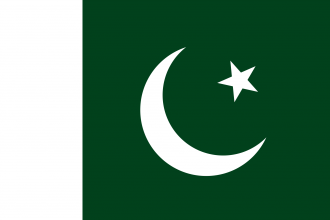Pakistan's Gross Domestic product (GDP) has grown every year since a 1951 recession. In 2015 GDP growth reached 4.2%, while official estimations forecasted that in 2016, GDP would grow by 5.5%. The main factors contributing to this growth have been the reform initiatives the Pakistani governments have taken over the years, commitment to a calibrated fiscal and monetary management and an overall improvement in the macroeconomic situation of the country.
The composition of Pakistani Gross Domestic Product has changed throughout the decades. Agriculture accounted for 34.4% of the GDP in FY 1975-76, while in the FY 2014-15, it had dropped to 20.88%. On the other hand, the Services sector increased its share by approximately 15% since the FY 1974-75 (44.5% in FY 1974-75, to 58.8% in FY 2014-15), proving that the local economy and society is in a process of transformation, from an agricultural society/economy to a more diversified one.
For FY 2014-15 agriculture provided 20.88% of GDP and 43.5% percent of employment. Additionally, it provides raw materials to other industrial sectors and it also accounts for a major share of the country’s exports.
In the FY 2014-15, the industrial sector contributed 20.30% to the country’s GDP. The Pakistani industrial sector plays a significant role in providing impetus to the local economy and in improving the economic status of the society. This is mainly due to its multi-dimensional direct and indirect effects, spill-overs of which benefit non-industrial sectors of the economy, such as agriculture and services.
Finally, it is worth mentioning that the services sector has been growing at a faster rate that the agriculture and industry sectors, emerging as the most significant driver of economic growth, playing a major role in enhancing the economic progress of Pakistan. For FY 2014-15, Services accounted for 58.8% of the GDP, while in FY 2008-09, it stood at 56%.
Pakistan’s exports are highly concentrated in a few categories of goods, namely, cotton and cotton products, leather, rice, chemicals & pharmaceutical products and sports equipment (apparel etc.). These five categories of goods accounted for about 69.3% of total exports by the country, for the period July-March 2014-15, with cotton and cotton products contributing some 55.4%, followed by rice (8.8%) and leather (5.1%). Geographically wise, Pakistan’s exports are highly concentrated. About 60% of the 2014-2015 exports were directed to ten specific countries, namely, the US, China, the UAE, Afghanistan, the UK, Germany, France, Bangladesh, Italy and Spain.
|
U.S.A. |
China |
U.A.E. |
Afghanistan |
UK |
Germany |
France |
Bangladesh |
Italy |
Spain |
Other |
|
|
FY 2009-10 |
17 |
6 |
9 |
8 |
5 |
4 |
2 |
3 |
3 |
2 |
41 |
|
FY 2010-11 |
16 |
7 |
7 |
9 |
5 |
5 |
2 |
4 |
3 |
2 |
51 |
|
FY 2011-12 |
15 |
9 |
10 |
10 |
5 |
4 |
1 |
3 |
2 |
2 |
38 |
|
FY 2012-13 |
14 |
11 |
9 |
8 |
5 |
4 |
4 |
3 |
2 |
2 |
37 |
|
FY 2013-14 |
15 |
10 |
7 |
7 |
6 |
5 |
2 |
3 |
3 |
3 |
40 |
|
July-March FY 2014-15 |
15 |
9 |
4 |
8 |
7 |
5 |
2 |
3 |
3 |
3 |
41 |
Source: http://www.finance.gov.pk/
On the other hand, for the period July to March of the FY 2014-15, Pakistani imports reached some 37.8 billion dollars, significantly increased (by some 678.3 million dollars), when compared to the same period of FY 2013-14. Imports of petroleum products over the period, including crude oil, accounted for more than a quarter of all imports (some 26%). Geographically wise, approximately 50% of Pakistan’s imports, originate from just a few countries, like China, Kuwait, Saudi Arabia, the UAE and Malaysia.

